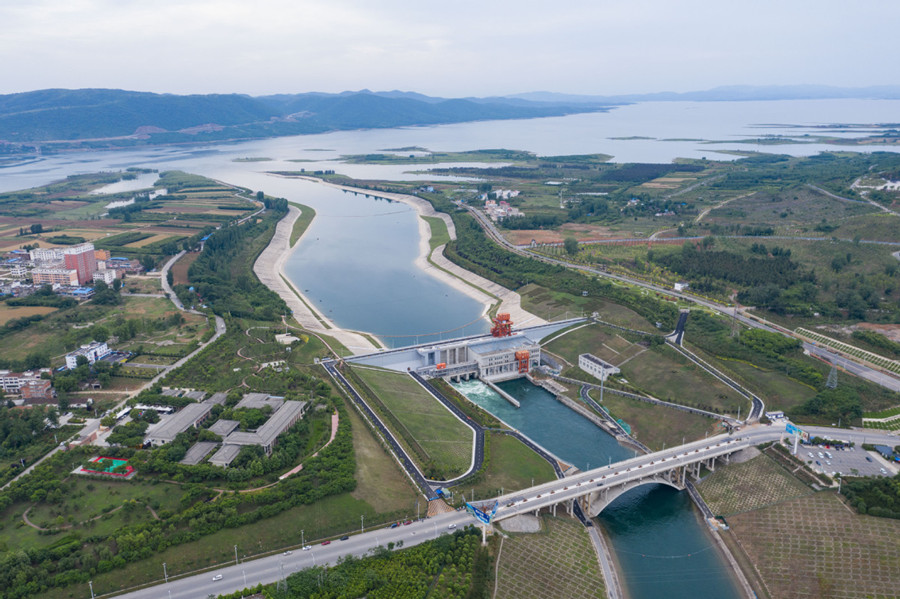Diversion project supplies water to 150 million people

Part of the South-to-North Water Diversion Project runs through Nanyang, Henan province. [Photo/Xinhua]
China's massive water diversion project channeling water from the Yangtze River Basin to the drought-prone north has directly benefited 150 million people and helped rejuvenate many water bodies plagued by water shortages, according to the Ministry of Water Resources.
Monday marked the end of the eighth plan year for the middle route of the project. In the year, the route diverted roughly 9.2 billion cubic meters of water to the north, which is almost 1.3 times the planned amount, the ministry said in a media release on Wednesday.
It was the third consecutive plan year that saw more water diverted compared to its designed annual average capability of about 8.5 billion cubic meters.
It has not been easy to divert such large amounts of water, as the flow into the Danjiangkou Reservoir, where the route begins, has decreased by about 60 percent amid a severe drought in the Yangtze River Basin from July to September, it noted.
The South-North Water Diversion Project was designed with eastern, middle and western routes. The most attention-grabbing of the three routes due to its role in bringing water to the capital, the middle route started supplying water on Dec 12, 2014. The first phase of the eastern route, which serves Jiangsu and Shandong provinces, started operation in November 2013.
The western route is still in the planning stage and has yet to be built.
The ministry said that to date the middle and eastern routes of the projects have diverted a total of 57.6 billion cubic meters of water, benefiting 42 major cities and over 280 county cities in seven provincial regions they pass.
The projects have also supplemented some 9.2 billion cubic meters of water to 50 water bodies to help restore their environments and ecosystems that have been jeopardized because of water shortages, it said.
Thanks to the supplementation, remarkable changes have occurred in Baiyangdian Lake, the largest freshwater wetland in northern China, in Xiong'an New Area. For an extended period of time, the water quality of the lake stood below Grade V, the worst in the country's five-tier quality system for surface water. The quality reached Grade IV in 2020 and was further upgraded to Grade III last year.
According to the online news portal ThePaper.cn, the number of wild bird species in and around the lake has increased to 238, compared with 206 before the new area was established on April 1, 2017.
























